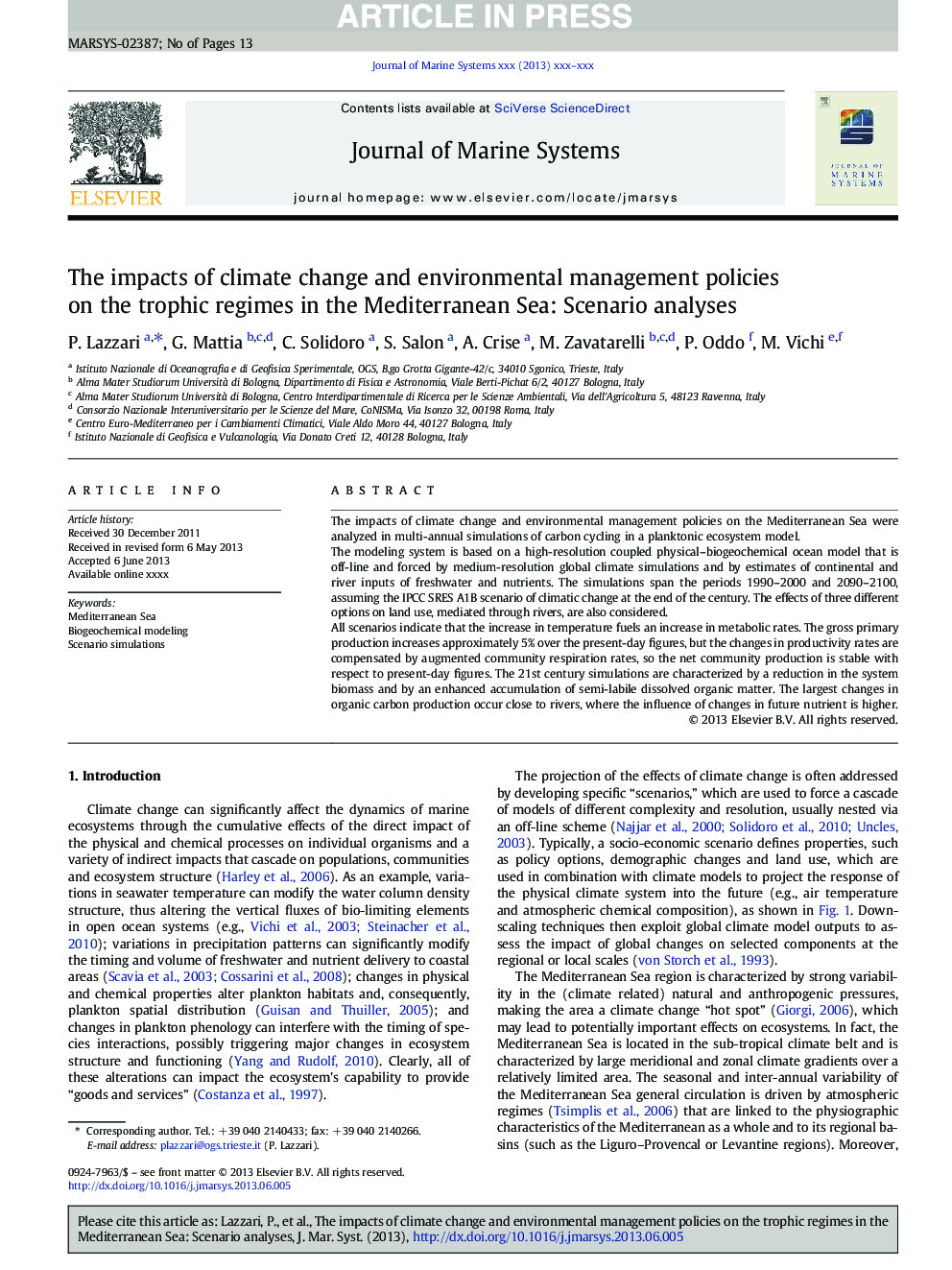| Article ID | Journal | Published Year | Pages | File Type |
|---|---|---|---|---|
| 6386892 | Journal of Marine Systems | 2014 | 13 Pages |
Abstract
All scenarios indicate that the increase in temperature fuels an increase in metabolic rates. The gross primary production increases approximately 5% over the present-day figures, but the changes in productivity rates are compensated by augmented community respiration rates, so the net community production is stable with respect to present-day figures. The 21st century simulations are characterized by a reduction in the system biomass and by an enhanced accumulation of semi-labile dissolved organic matter. The largest changes in organic carbon production occur close to rivers, where the influence of changes in future nutrient is higher.
Related Topics
Physical Sciences and Engineering
Earth and Planetary Sciences
Oceanography
Authors
P. Lazzari, G. Mattia, C. Solidoro, S. Salon, A. Crise, M. Zavatarelli, P. Oddo, M. Vichi,
